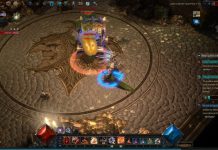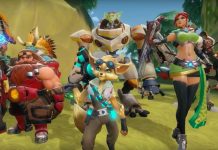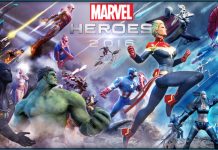If you’re an MMO fanatic, you might have heard the term MUD, MUSH, or other acronym starting with MU. The term refers to ‘Multi-User Dungeons’, an archaic form of game that you have to thank for all of the modern MMOs in existence.
As you may be able to tell from the above screenshot, these games are completely text-based, with a bit of color, most likely. The first MUD, created in 1978, would spark the creation of a new type of game. One that allowed players to play together…online! This is all well and good, but there is one more fact that may surprise you…there are many MUDs still in existence today! They have excellent gameplay, can be played nearly anywhere, no matter how bad the internet connection. They also have the added bonus of not requiring gigabytes of space on your hard-drive, too.
MUDs are played in a console of some sort. If you are on a Linux or Windows (XP or older) computer, you can even play directly from your command prompt..simply type in ‘telnet [url] [port]’ or possibly ‘telnet [url]:[port]’. If you’d like to check out one right away, simply connect to ‘zombiemud.org’ (you can leave out the port number). If you have a newer Windows than XP, you can check out a quick guide on connecting to MUDs in the forum.
Now that you are capable of connecting to and playing MUDs, I’ll give you a brief overview of how they work.
The basic way a MUD works is quite simple. The MUD sends you lines of text to your terminal whenever something happens. You may get messages such as “The wraith attacks you!” or “Qull shouts, ‘Run away!'”. It is important to be literate, as most MUDs lack pictures, and those that have pictures don’t use them as the main form of depiction. As you receive updates on things happening around you, you are able to type in (and press enter) commands to initiate in the world. Some typical examples:
- look (or ‘l’) : Displays information (and maybe a map) of the room you are in, and what is in it.
- compass directions (n, e, s, w) : Move that direction, taking you to a new room.
- kill bird (or ‘k’) : Initiate an attack on something.
There are many commands, but they can differ depending which MUD you are playing. Typing in ‘help’ will usually give you somewhere to start.
Not all MUDs are completely text based, and not all of them even are violent. Many MUDs existing as social hangouts also exist (and are typically coined ‘MUSH’). 8BitMUSH is one example of such a game. It gives each player who joins an area to call their home that they can edit, program, and create within as they wish. It also has a web-based client and art-tool that has resulted in some beautiful pieces of artwork within the game created by the players, and is definitely worth checking out at least once.
The best way to find out what MUDs are all about though is to simply explore. You can check out either of the aforementioned ones in this post (zombiemud.org and ansiart.com, both have helpful websites, and 8Bit has a browser-based client), or check out the list at the GameOgre MUD Directory or GameOgre MUD Forums.



















Excellent and enjoyable article, quinn!
The Multi-User Dungeon and games like Nethack really did forge the way for modern graphical MMOs. In fact, the MOO itself (a cousin of the MUD and MUSH) became one of my favorite past-times for examining the anthropological merits of user-generated spaces—MOOs were essentially the sandbox-style anything-goes MUD, or possibly the SecondLife version of MUDs where users could make anything they wanted and build entire textual worlds.
MUDs themselves grew out of the choose-your-own-adventure narrative genre and the text adventure on computers. There’s a book, Twisty Little Passages by by Nick Montfort that talks about these early text games and gives some insight into how they presaged the development of the MUD; which in turn could be said to have founded the philosophy necessary to bring about revolutions like Ultima Online, the most-recent common ancestor for the graphical MMO genre.
MUSHes and MOOs tend to be very similar in my experience. They both allow a lot of freedom for the players. Of course, this can be altered drastically depending on the setting, and some MUSHes and MOOs have no player created stuff. But as a rule they tend to be more social and creative than MUDs.
Interactive Fiction (those text adventures) are still alive as an art medium, and there are a great deal of tools that the average person can use easily to create those types of stories. They are also quite fun to look at and fiddle with, and are indeed where MUDs stemmed from originally.
Nethack is actually from an entirely different genre of text-based games known as Roguelikes. These games offer a top-down view of the world, with characters representing different enemies. Nethack, Angband, and ADoM being the main keystones of the genre. I play these excessively as well, just beat Nethack for the first time last month! There is only one multiplayer roguelike that I know of, however, and it is a very different experience than other games in the genre tend to be.